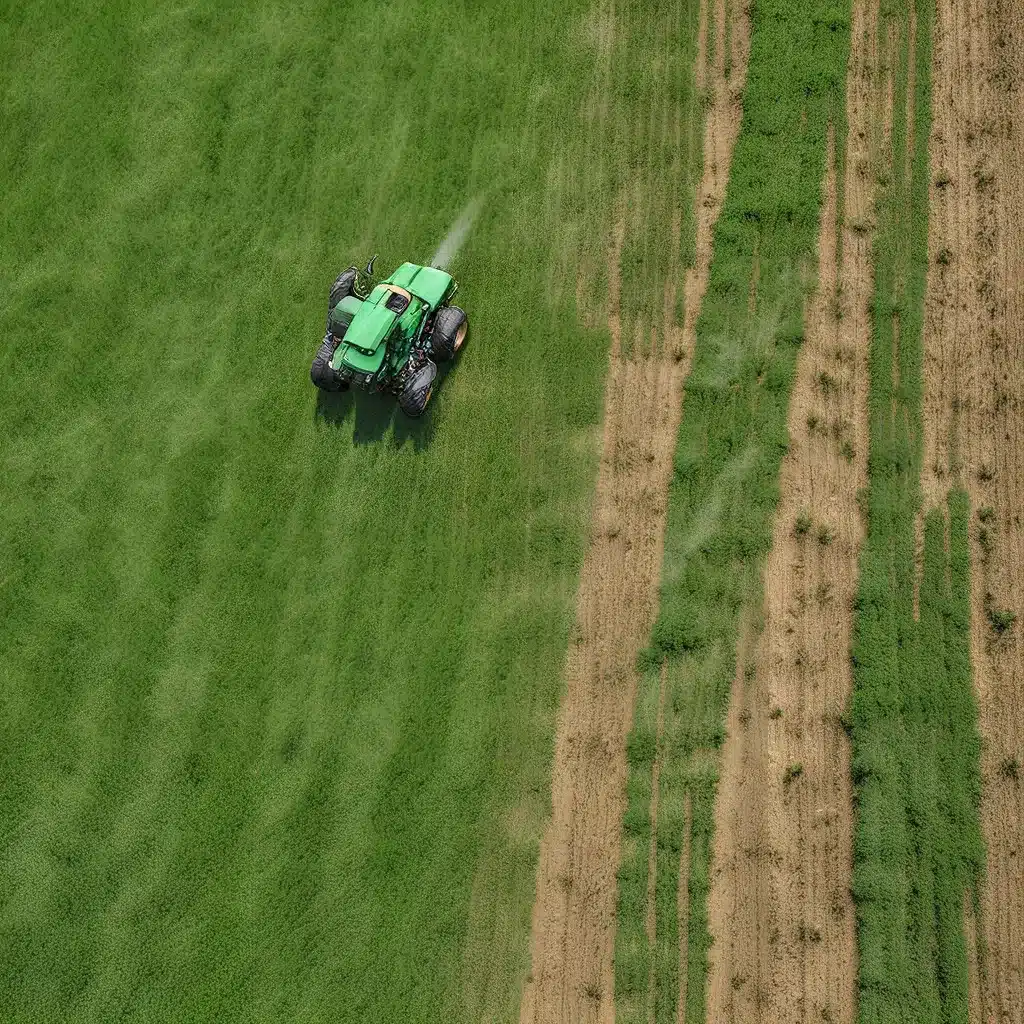
The Rise of Sensor Networks in Precision Farming
Sensor networks have emerged as a transformative technology in the realm of modern agriculture, revolutionizing the way farmers approach crop management and resource optimization. By seamlessly integrating a diverse array of sensors, data analytics, and automation, precision agriculture has unlocked unprecedented levels of efficiency and productivity.
At the heart of this paradigm shift lies the Internet of Things (IoT), which has enabled the widespread deployment of sensor-based systems across farming operations. These sensor networks collect real-time data on factors such as soil moisture, nutrient levels, weather conditions, and crop health, providing farmers with a comprehensive understanding of their land and crops.
Through the analysis of this data, farmers can make informed decisions, optimize the application of water, fertilizers, and pesticides, and even automate certain tasks, such as irrigation and field operations. This precision-driven approach not only enhances crop yields but also reduces the environmental impact of agricultural practices, making it a valuable tool in the pursuit of sustainable food production.
Harnessing the Power of Sensor Data
The data collected by sensor networks in precision agriculture serves as the foundation for informed decision-making and targeted interventions. By leveraging advanced analytics and machine learning algorithms, farmers can gain unprecedented insights into the health and performance of their crops, allowing them to respond proactively to emerging challenges.
One of the key benefits of sensor-driven precision agriculture is the ability to precisely control the application of inputs, such as water and fertilizers. Rather than relying on blanket approaches, sensors can detect the specific needs of different areas within a field, enabling farmers to apply the right amount of resources at the right time. This not only optimizes resource utilization but also helps minimize wastage and environmental pollution.
Moreover, sensor networks can monitor livestock health and behavior, providing valuable data to dairy farmers and ranchers. By tracking factors like animal activity, feeding patterns, and environmental conditions, farmers can identify potential health issues early and take appropriate measures to maintain herd well-being.
Overcoming Adoption Challenges
While the benefits of precision agriculture are well-documented, the adoption of sensor-based technologies has faced several challenges that limit their widespread implementation, as highlighted in the source information.
One of the primary hurdles is the high upfront cost associated with the deployment of precision agriculture technologies. The specialized equipment, software, and training required can be prohibitive for many small-scale and resource-constrained farmers, particularly in developing regions.
Additionally, the complexity of these systems can present a barrier to adoption, as some farmers may lack the technical expertise or resources to effectively manage and maintain the sensor networks. Overcoming this challenge requires comprehensive education, training, and support for farmers to ensure they can fully harness the potential of these technologies.
Policy Interventions to Drive Adoption
To address the challenges limiting the broader adoption of precision agriculture, policymakers and stakeholders have explored various policy goals and options, as outlined in the source information.
One key policy goal is to enhance affordability and accessibility of precision agriculture technologies. This can be achieved through financial assistance programs**, such as subsidies, tax incentives, or cost-sharing initiatives, which can help offset the upfront costs for farmers.
Another policy goal is to support research, development, and education in the field of precision agriculture. By investing in collaborative partnerships between government agencies, academic institutions, and industry, policymakers can drive innovation, improve the technology, and ensure that farmers have access to the necessary knowledge and skills.
Furthermore, regulatory frameworks that promote the responsible use of sensor-based technologies and data privacy can help build trust and confidence among farmers, addressing concerns related to data ownership and security.
The Future of Sensor-Driven Precision Agriculture
As the global population continues to grow and the demand for food production increases, the role of sensor-driven precision agriculture becomes ever more crucial. By harnessing the power of sensor networks, IoT, and advanced analytics, farmers can enhance crop yields, optimize resource utilization, and reduce the environmental impact of agricultural practices.
The future of precision agriculture holds the promise of autonomous farming systems, where sensor-equipped drones, robots, and self-driving tractors work in harmony to optimize every aspect of crop management. Furthermore, the integration of artificial intelligence (AI) and machine learning will enable even more sophisticated decision-making, allowing for highly personalized, data-driven interventions at the individual plant or animal level.
As the technology continues to evolve and the policy landscape adapts to support its adoption, the sensor-driven precision agriculture revolution will undoubtedly play a pivotal role in shaping the future of sustainable and efficient food production, benefiting both farmers and the environment.
Conclusion
The sensor-driven precision agriculture revolution is a testament to the transformative power of technology in the agricultural sector. By seamlessly integrating sensor networks, data analytics, and automation, farmers can now optimize resource utilization, enhance crop yields, and reduce the environmental impact of their operations.
While challenges around adoption remain, policymakers and stakeholders are exploring various initiatives to address these barriers and drive the widespread implementation of these transformative technologies. As the world grapples with the pressing need for sustainable food production, the sensor-driven precision agriculture paradigm holds the key to a future where technology and agriculture work in harmony to meet the demands of a growing population.
The sensor networks community is at the forefront of this revolution, constantly pushing the boundaries of innovation and collaboration to unlock the full potential of sensor-driven precision agriculture. By staying informed and engaged, we can collectively shape the future of sustainable and efficient food production, paving the way for a more prosperous and environmentally-conscious agricultural landscape.